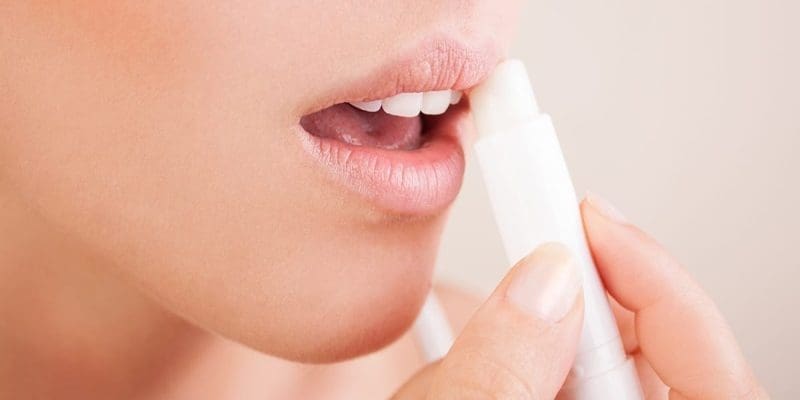
The Ultimate Lip Balm Guide For Soft, Supple Lips
Winter is synonymous with dry, flaky skin that craves moisture like never before. And just in case you weren’t aware, the skin on your lips is thin and sensitive, making it particularly vulnerable to dehydration. Here’s where an ultra-hydrating lip balm comes in – it is a wax-like substance that instantly compensates for lost moisture with the help of ceramides and humectants that fortify your skin barrier. Before we elucidate the different types of lip balms and their key features, let’s break down the several reasons why your lips may be chapped this season.
Why Are My Lips So Dry and Flaky?
There could be a couple of reasons why your lips are getting chapped. Let’s discuss the most common ones:
- You’re not drinking enough fluids
- The dry, cold air is making your lips parched
- Prolonged sun exposure is flaking the skin on your lips
- You’re continually licking or biting your lips
- You are consuming certain medications (such as isotretinoin) known to dry lips
- You are over-exfoliating your lips with a lip scrub
Moisturising Lip Balm Ingredients to Look For
If you’re experiencing severe lip dryness, look for super-hydrating ingredients on your buy lip balm label. A few of these ingredients are petroleum jelly, sunflower oil, cocoa butter, sweet almond oil, argan oil, castor seed oil, ceramides, dimethicone, hemp seed oil, mineral oil, shea butter, titanium oxide, zinc oxide, glycerin, hyaluronic acid, aloe vera, and honey.
Common Lip Balm Ingredients to Avoid
To ensure that your lips don’t get further damaged, irritated, or dehydrated, look to avoid specific harmful ingredients such as camphor, eucalyptus, fragrances, artificial flavours, menthol, cinnamon, octinoxate or oxybenzone, phenyl, and propyl gallate. Avoid lip balms that lend a burning or tingling sensation, as they can cause redness and inflammation, exacerbating dryness.
Types of Lip Balms
1. Tinted Lip Balm
If you don’t want to go all out with your beauty look, swap your lipstick for a tinted lip balm, as they lend a subtle hint of colour to your pucker. Tinted lip balms moisturise your lips while offering a flattering swipe of colour.
2. Flavoured Lip Balm
As the name suggests, a flavoured lip balm contains added flavours, most often cinnamon, mint, mango, menthol, and strawberry, among other fruity flavours. While these offerings can entice your taste buds and olfactory senses, they aren’t ideal if your lips are dry.
3. SPF-Infused Lip Balm
An SPF-infused lip balm helps shield the skin on your lips from harmful UVA and UVB rays. By offering sun protection, they limit the adverse effects of sun exposure on your pucker.
4. Natural or Organic Lip Balm
A natural or organic lip balm is devoid of toxins and chemicals. These formulations boast organic, nature-derived ingredients – such as beeswax, vitamins C and E, and coconut oil – that are ideal for sensitive skin types and limit the chances of skin irritation or inflammation.
5. Plumping Lip Balm
A plumping lip balm helps give the illusion of fuller lips while moisturising them. It lends a tingling or burning sensation that instantly plumps your pucker sans any invasive procedure. If you have dry lips, do not pick a plumping formula, as it may irritate your skin.
6. CBD or Hemp Oil Lip Balm
A CBD or hemp oil lip balm contains these elements, which offer anti-inflammatory properties and intensely moisturise your skin. A CBD or hemp oil lip balm is ideal for cold sores, allergies, skin irritation, and inflamed lips.
6. Medicated Lip Balm
Medicated lip balms help address severe dryness and other lip concerns. Medical professionals prescribe these formulas that help soothe irritation, allergies, and inflammation. Medicated lip balms also help tackle bacterial and fungal infections.
How Often to Use a Lip Balm?
There’s no cap on how often you should apply a lip balm. If you’re using a medicated formula, apply it as often as your dermatologist has instructed. Meanwhile, if you’re using a tinted or flavoured variant, you can apply it as often as you like – perhaps when stepping out of the house for a casual brunch. Apply lip balm as much as required to maintain optimal hydration and avoid dehydration or flaking. However, avoid overdoing it for prolonged periods, as your lips may lose their natural ability to keep the skin hydrated.
Lip Care Tips to Bear in Mind
- Prep Your Pout: As you follow a pre-determined skincare routine, consider adopting a lip care routine for soft, supple lips. Exfoliate your pucker twice weekly to slough off dead skin cells and facilitate skin cell regeneration. Lip exfoliation will also pave the path for better absorption of your following lip care products. If you don’t own a scrub, whip one up at home with honey and brown sugar.
- Boost Hydration: If you are experiencing severe dryness during colder months, consider doubling down on moisturisation by introducing a hydrating lip mask into your lip care routine. An overnight lip mask can amplify hydration and restore lost moisture, with you waking up to a smooth and supple pout.
- Lay Off Lip Balms That Are Worsening Your Condition: If a plumping or mattifying lip balm is causing your lip concern to worsen, steer clear of these formulas. You can opt for a tinted variant that lends ample moisturisation while delivering a hint of tint to your pucker.
Conclusion
Incorporating a suitable lip balm into your beauty regimen is vital. The trick is to find a formulation that works best for you. Consider performing a patch test before committing to a product, and if you experience any allergic reactions, discontinue using the lip balm.
